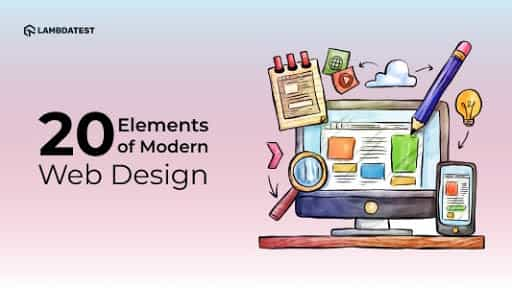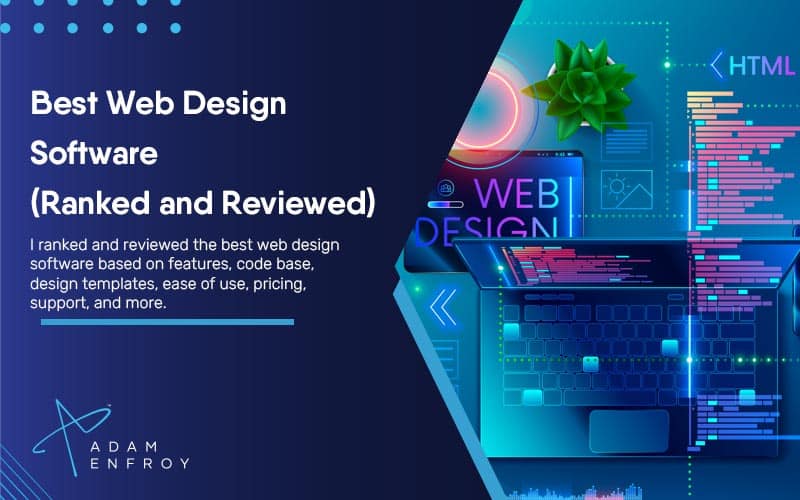All Categories
Featured
Table of Contents
- – Figma: The Collaborative Interface Design Tool...
- – Awwwards - Website Awards - Best Web Design T...
- – 34 Of The Best Website Designs To Inspire You...
- – Basics Of Web Development & Coding Specializa...
- – $899 - Custom Mobile Friendly Website Design ...
- – Sustainable Web Design: Home Tips and Tricks:
- – Web Design Museum 1991 – 2006 Tips and Tricks:
- – Arch Web Design: Top-rated Web Design Agency...
- – The Top Ecommerce, Website Design ... - Seat...
- – St Louis Seo Company - St Louis Web Design A...
- – Indianapolis Web Design And Digital Marketin...
Figma: The Collaborative Interface Design Tool. Tips and Tricks:
Quick summary Usability and the energy, not the visual design, figure out the success or failure of a website. Because the visitor of the page is the only individual who clicks the mouse and for that reason chooses whatever, user-centric style has actually established as a basic method for successful and profit-oriented website design - web design frederick md.
and the utility, not the visual design, determine the success or failure of a website. Since the visitor of the page is the only individual who clicks the mouse and therefore decides everything, user-centric style has become a standard approach for effective and profit-oriented web design. If users can't use a feature, it may as well not exist.
g. where the search box should be placed) as it has actually currently been done in a number of posts; rather we focus on the approaches which, used appropriately, can result in more sophisticated design decisions and streamline the procedure of viewing presented details. Please discover that you might be thinking about the usability-related articles we've released before: Principles Of Good Website Style And Reliable Website Design Guidelines, In order to use the concepts appropriately we initially need to comprehend how users engage with sites, how they believe and what are the fundamental patterns of users' behavior.
Awwwards - Website Awards - Best Web Design Trends Tips and Tricks:
Visitors glimpse at each brand-new page, scan some of the text, and click on the first link that captures their interest or vaguely resembles the thing they're looking for. In truth, there are large parts of the page they don't even look at. The majority of users browse for something fascinating (or helpful) and clickable; as soon as some promising candidates are discovered, users click.
If a page offers users with premium content, they want to compromise the content with advertisements and the design of the site. This is the reason that not-that-well-designed websites with high-quality material get a lot of traffic over years. Content is more important than the design which supports it.

Users don't read, they scan. Notice how "hot" locations abrupt in the middle of sentences. This is normal for the scanning procedure. Extremely basic concept: If a site isn't able to satisfy users' expectations, then designer failed to get his job done properly and the company loses money. The higher is the cognitive load and the less user-friendly is the navigation, the more willing are users to leave the site and look for options.
34 Of The Best Website Designs To Inspire You In 2022 Tips and Tricks:
Neither do they scan website in a linear style, going sequentially from one site section to another one. Instead users satisfice; they select the first sensible alternative. As quickly as they find a link that appears like it might lead to the objective, there is an excellent possibility that it will be immediately clicked.
It doesn't matter to us if we understand how things work, as long as we can utilize them. If your audience is going to imitate you're developing billboard, then style fantastic signboards." Users wish to be able to control their internet browser and depend on the constant information presentation throughout the website.
If the navigation and site architecture aren't instinctive, the variety of enigma grows and makes it harder for users to comprehend how the system works and how to receive from point A to point B. A clear structure, moderate visual hints and quickly recognizable links can help users to find their path to their aim.
Basics Of Web Development & Coding Specialization - Coursera Tips and Tricks:

Considering that users tend to explore websites according to the "F"-pattern, these three statements would be the first elements users will see on the page once it is filled. The style itself is simple and instinctive, to understand what the page is about the user requires to search for the response.
As soon as you have actually achieved this, you can interact why the system works and how users can benefit from it. Individuals will not utilize your web site if they can't discover their method around it. 2. Don't Waste Users' Persistence, In every job when you are going to offer your visitors some service or tool, attempt to keep your user requirements very little.
Novice visitors want to, not filling long web forms for an account they might never ever use in the future. Let users explore the website and find your services without requiring them into sharing private data. It's not affordable to require users to get in an e-mail address to evaluate the function.
$899 - Custom Mobile Friendly Website Design By Go Web ... Tips and Tricks:
Stikkit is an ideal example for an user-friendly service which needs nearly nothing from the visitor which is inconspicuous and reassuring. Which's what you want your users to feel on your web website. Obviously, Mite needs more. The registration can be done in less than 30 seconds as the kind has horizontal orientation, the user does not even need to scroll the page.
A user registration alone suffices of an impediment to user navigation to cut down on inbound traffic. 3. Manage To Focus Users' Attention, As websites supply both static and dynamic content, some aspects of the interface bring in attention more than others do. Certainly, images are more attractive than the text simply as the sentences marked as vibrant are more attractive than plain text.
Focusing users' attention to specific locations of the site with a moderate usage of visual aspects can help your visitors to obtain from point A to point B without thinking about how it really is supposed to be done. The less enigma visitors have, the they have and the more trust they can develop towards the company the site represents.
Sustainable Web Design: Home Tips and Tricks:
Strive For Feature Direct exposure, Modern web designs are typically criticized due to their technique of directing users with aesthetically appealing 1-2-3-done-steps, big buttons with visual effects etc. From the style perspective these aspects actually aren't a bad thing.
The website has 9 primary navigation alternatives which are noticeable at the very first glance. What matters is that the content is well-understood and visitors feel comfy with the method they engage with the system.
Rather a price: simply what visitors are looking for. An ideal solution for reliable writing is touse brief and succinct expressions (come to the point as rapidly as possible), use scannable layout (categorize the content, utilize multiple heading levels, use visual components and bulleted lists which break the circulation of uniform text blocks), usage plain and objective language (a promotion doesn't need to sound like ad; give your users some reasonable and unbiased reason why they ought to utilize your service or remain on your website)6.
Web Design Museum 1991 – 2006 Tips and Tricks:
Users are seldom on a site to delight in the design; additionally, most of the times they are searching for the information regardless of the design - web design frederick md. Pursue simplicity instead of complexity. From the visitors' perspective, the best website design is a pure text, with no ads or additional content obstructs matching exactly the query visitors utilized or the content they have actually been looking for.
Finch clearly presents the info about the site and gives visitors an option of choices without overcrowding them with unneeded content. Not only does it assist to for the visitors, but it makes it possible to view the information provided on the screen.
Complex structures are more difficult to read, scan, analyze and deal with. If you have the choice in between separating two design sections by a visible line or by some whitespace, it's usually much better to use the whitespace option. (Simon's Law): the better you manage to supply users with a sense of visual hierarchy, the much easier your content will be to view.
Arch Web Design: Top-rated Web Design Agency For Saas ... Tips and Tricks:
The same conventions and rules ought to be used to all elements.: do the most with the least amount of hints and visual elements. Clarity: all components should be created so their meaning is not uncertain.
Conventions Are Our Pals, Traditional design of site elements does not result in an uninteresting web website. It would be an usability headache if all websites had different visual presentation of RSS-feeds.
understand what they're expecting from a website navigation, text structure, search positioning etc. A case in point from usability sessions is to equate the page in Japanese (presuming your web users don't understand Japanese, e. g. with Babelfish) and offer your usability testers with a job to discover something in the page of different language.
The Top Ecommerce, Website Design ... - Seattle Tips and Tricks:
Test Early, Test Typically, This so-called TETO-principle should be used to every web design job as usability tests typically provide into substantial issues and problems related to an offered layout. Test not too late, not too little and not for the wrong reasons.
Some crucial points to keep in mind: according to Steve Krug, and testing one user early in the project is much better than testing 50 near the end. Accoring to Boehm's very first law, mistakes are most regular during requirements and design activities and are the more costly the later on they are gotten rid of.
That means that you design something, test it, fix it and after that test it once again. There might be issues which haven't been found during the very first round as users were practically blocked by other issues. functionality tests. Either you'll be indicated the problems you have or you'll be pointed to the absence of major design flaws which remains in both cases a beneficial insight for your task.
St Louis Seo Company - St Louis Web Design And Internet ... Tips and Tricks:

This holds for designers too. After you have actually dealt with a website for couple of weeks, you can't observe it from a fresh viewpoint any longer. You understand how it is built and therefore you know precisely how it works you have the wisdom independent testers and visitors of your website would not have.
It can be linked to other areas such as graphic design, user experience, and multimedia arts, but is more appropriately seen from a technological perspective. It has become a large part of individuals's everyday lives. It is tough to imagine the Internet without animated graphics, different styles of typography, background, videos and music.

During 1991 to 1993 the World Wide Web was born. Text-only pages might be viewed utilizing a basic line-mode internet browser. There had actually been no integrated method to graphic design elements such as images or sounds.
Indianapolis Web Design And Digital Marketing Agency Tips and Tricks:
The W3C was created in October 1994 to "lead the Internet to its complete potential by establishing typical protocols that promote its development and ensure its interoperability." This dissuaded any one company from monopolizing a propriety internet browser and programs language, which might have changed the impact of the Internet as a whole.
As this has taken place the innovation of the web has actually also moved on. There have actually also been significant changes in the method individuals utilize and access the web, and this has changed how sites are created.
Learn more about Lovell Media Group LLC or TrainACETable of Contents
- – Figma: The Collaborative Interface Design Tool...
- – Awwwards - Website Awards - Best Web Design T...
- – 34 Of The Best Website Designs To Inspire You...
- – Basics Of Web Development & Coding Specializa...
- – $899 - Custom Mobile Friendly Website Design ...
- – Sustainable Web Design: Home Tips and Tricks:
- – Web Design Museum 1991 – 2006 Tips and Tricks:
- – Arch Web Design: Top-rated Web Design Agency...
- – The Top Ecommerce, Website Design ... - Seat...
- – St Louis Seo Company - St Louis Web Design A...
- – Indianapolis Web Design And Digital Marketin...
Latest Posts
Website Creators Frederick MD
Webpage Design (Article) - Further Learning - Khan Academy Tips and Tricks:
Lifted Logic: Web Design In Kansas City - Seo - Website ... Tips and Tricks:
More
Latest Posts
Website Creators Frederick MD
Webpage Design (Article) - Further Learning - Khan Academy Tips and Tricks:
Lifted Logic: Web Design In Kansas City - Seo - Website ... Tips and Tricks: